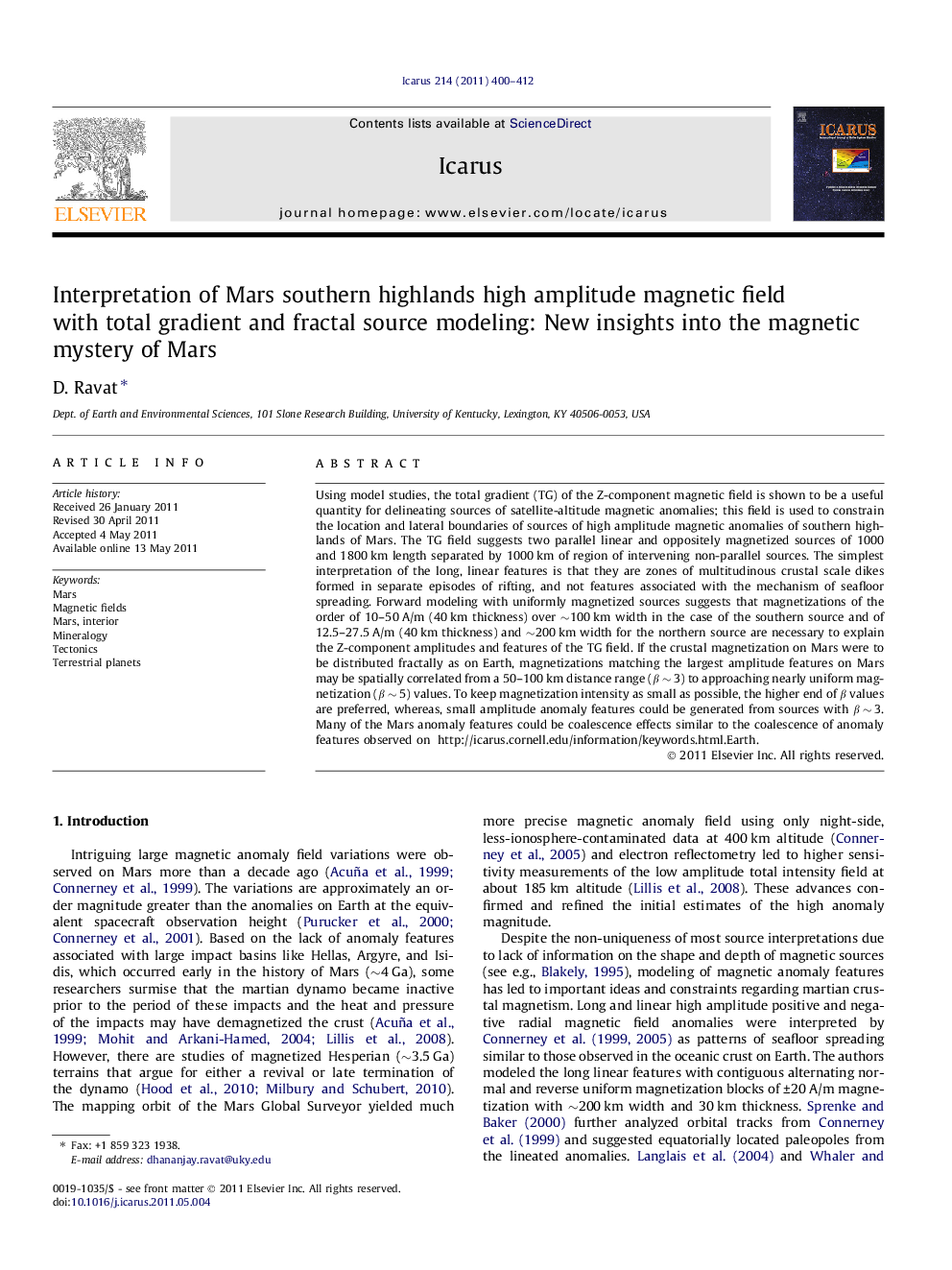| Article ID | Journal | Published Year | Pages | File Type |
|---|---|---|---|---|
| 1774185 | Icarus | 2011 | 13 Pages |
Using model studies, the total gradient (TG) of the Z-component magnetic field is shown to be a useful quantity for delineating sources of satellite-altitude magnetic anomalies; this field is used to constrain the location and lateral boundaries of sources of high amplitude magnetic anomalies of southern highlands of Mars. The TG field suggests two parallel linear and oppositely magnetized sources of 1000 and 1800 km length separated by 1000 km of region of intervening non-parallel sources. The simplest interpretation of the long, linear features is that they are zones of multitudinous crustal scale dikes formed in separate episodes of rifting, and not features associated with the mechanism of seafloor spreading. Forward modeling with uniformly magnetized sources suggests that magnetizations of the order of 10–50 A/m (40 km thickness) over ∼100 km width in the case of the southern source and of 12.5–27.5 A/m (40 km thickness) and ∼200 km width for the northern source are necessary to explain the Z-component amplitudes and features of the TG field. If the crustal magnetization on Mars were to be distributed fractally as on Earth, magnetizations matching the largest amplitude features on Mars may be spatially correlated from a 50–100 km distance range (β ∼ 3) to approaching nearly uniform magnetization (β ∼ 5) values. To keep magnetization intensity as small as possible, the higher end of β values are preferred, whereas, small amplitude anomaly features could be generated from sources with β ∼ 3. Many of the Mars anomaly features could be coalescence effects similar to the coalescence of anomaly features observed on http://icarus.cornell.edu/information/keywords.html.Earth.
► I interpret two long, linear magnetic field features in the southern highlands of Mars as independent zones of dikes. ► The seafloor spreading model is not favored because the dikes are 1000 km apart with non-parallel intervening sources. ► Fractal characterization suggests that the maximum Mars crustal magnetization is likely to be 40–50 A/m.
